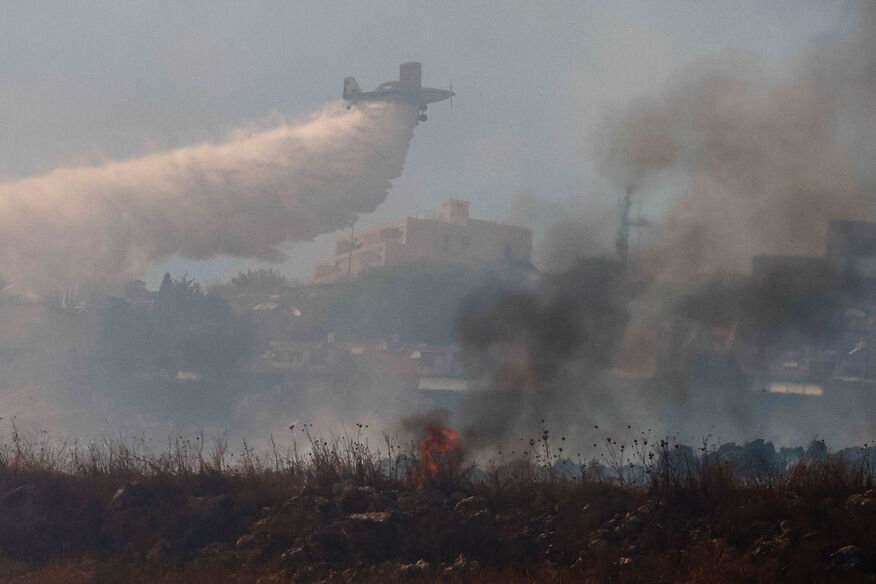[Reuters Analysis] The ever-evolving 'Trump doctrine' and the fight for US strategy: Peter Apps


By Peter Apps
WASHINGTON, July 11 (Reuters) - As some 20 Iranian ballistic missiles headed for the U.S. airbase at Al Udeid in Qatar last month following U.S. strikes against Iran, the only U.S. personnel at the almost entirely evacuated base were some 40 air defence personnel manning a Patriot missile battery flown in a few weeks earlier.
According to a press briefing by U.S. Chairman of the Joint Chiefs of Staff, Air Force General Daniel Caine, a few days later, together with another Patriot detachment from the Qatari military also present at the base, the U.S. team fired more of the defence missiles than in any previous engagement since the system was first deployed in the first Gulf War in 1991.
“They crushed it,” he said, noting that damage to the base was minimal with no casualties.
On the surface, officials from the Trump administration have painted last month’s U.S. strikes against Iran as an unusually decisive use of U.S. power, talking of a new “Trump doctrine” in which military force is used with much clearer aims than under previous presidents.
They argue it has “restored American deterrence”, sending a clear signal to other potential foes including Moscow and Beijing.
The administration had also presented its 52-day bombing campaign against Houthi militants in Yemen as being similarly successful in restoring freedom of navigation there – only for the Houthis to restart attacks on shipping in recent days.
All of that comes amid growing divisions within the administration over the future use of U.S. military force, while still leaving open questions over how the U.S. might respond to potential future crises, particularly a Chinese invasion of Taiwan or Russia attack on eastern NATO states.
On that front, recent events in the Gulf have already had consequences in Washington and beyond. According to reports this week, the U.S. has barely 25% of the Patriot missile stockpile the Pentagon believes it needs. Consumption of those missiles in the Middle East and Ukraine has made growing those stocks impossible despite heightened production.
Last week, that prompted a Pentagon edict stopping shipment of several weapons types to Ukraine including Patriot, long-range HIMARS strike rockets and artillery shells, described at the time as a deliberate decision to help rebuild U.S. stocks.
That decision, however, has since been reversed by President Donald Trump amid reports it had never received White House authorisation in the first place. “We have to,” Trump told a press conference in Washington. “They have to be able to defend themselves.”
The U.S. president has become increasingly critical of his Russian counterpart Vladimir Putin in recent days, accusing him of being uninterested in Trump’s efforts to mediate a peace deal as Russian forces have launched the largest drone strikes of the war against Ukraine.
That will likely worry the powerful group within the current administration known as “the restrainers”, keen to rein in the multi-decade U.S. tendency to make open-ended defence commitments and become entangled in long-running “forever wars”.
DIFFICULT DECISIONS
The result is several increasingly apparent divisions over policy, between them opening up huge uncertainties over future U.S. military posture.
On one side are those including several top U.S. military commanders who argue Ukraine should be supported as its defeat would likely empower Moscow and Beijing to launch future attacks.
On the other are individuals including Defense Secretary Pete Hegseth and Pentagon number three civilian official Elbridge Colby who have argued publicly that sending too much support to Ukraine helps China by driving down already limited U.S. weapons stocks.
Ironically, that group – including Vice President JD Vance, among the most publicly committed U.S. officials to reducing America’s overseas military footprint – had been among the most supportive of Trump’s actions on Iran, presenting it as an example of a new and much more limited approach to U.S. intervention.
"What I call the Trump Doctrine is quite simple," Vance told an Ohio fundraising dinner last month.
"Number one: you articulate a clear American interest ... in this case, that Iran can't have a nuclear weapon. Number two, you try to aggressively diplomatically solve that problem. Number three, when you can't solve it diplomatically, you use overwhelming military power to solve it and then you get the hell out of there before it becomes a protracted conflict.”
Attempting to classify Trump’s presidential decisions within a defined doctrine, however, still brings several challenges.
The first is the man himself, who as far back as the 1980s was describing his unpredictability and habit of making last-minute decisions on investments as a central tenet of his “Art of the Deal”.
More recently since taking office, attempts to lock him into one course of action can readily backfire and lead to him endorsing another.
Another even more significant challenge is that the threats the United States now most needs to deter – a potential Chinese attack against Taiwan, or a Russian assault into Eastern Europe – are likely impossible to counter through a single U.S. strike.
Instead, Trump or his successors would likely face a choice between either unleashing a massive open-ended U.S. conventional military campaign – at the very least an air, drone and missile offensive against advancing Russian or Chinese forces – or abandoning Taiwan and eastern European allies to their fate.
In his first term in office and also early in last year’s presidential campaign, Trump repeatedly questioned whether European NATO members deserved U.S. protection if they were not spending enough on their own defence.
But audio recently released of a fundraising speech last year showed him claiming he had taken a much tougher line with both Putin and Chinese leader Xi Jinping in private, warning he would launch U.S. military action if they attacked Taiwan or Ukraine, neither of which has a binding defence treaty with the United States.
"If you go into Ukraine, I'm going to bomb the shit out of Moscow. I'm telling you I have no choice," Trump said he told Putin on an undisclosed date. "And then he goes, like, 'I don't believe you'," Trump continued. "But the truth is he believed me 10%."
He said he also made a similar threat to Xi: “He thought I was crazy,” Trump told his fellow diners, adding that he believed that even if they only believed him “five or ten percent” the deterrent was effective.
Since that audio was released, some have questioned whether the conversations Trump described ever took place – his former national security adviser John Bolton said he was aware of no such conversations before his own 2019 government departure.
If they did take place, however – or even if they did not but reflect his broader conclusions over the necessity to sometimes threaten or use force – it would broadly reflect the experience of previous presidents as well as Trump's own record during his first administration.
FUTURE U.S. POSTURE
In the aftermath of World War Two, presidents Truman, Eisenhower and Kennedy all wrestled with the challenge of confronting both the Soviet Union and Communist China, particularly after the perception the U.S. would not come to the aid of South Korea was seen as having inadvertently led to the start of the Korean War in 1951.
Their conclusion, often quite reluctantly, was that to avoid further bloodshed and perhaps escalation to catastrophic global war they must deepen commitments to threatened U.S. allies, including warning the U.S. would use conventional or atomic force to protect them if attacked.
On several occasions in his first term, Trump authorised U.S. action on a scale that might have been rejected by the Obama or Biden administrations – but which those around the president believe were successful in at least partially deterring and restraining adversary behaviour.







